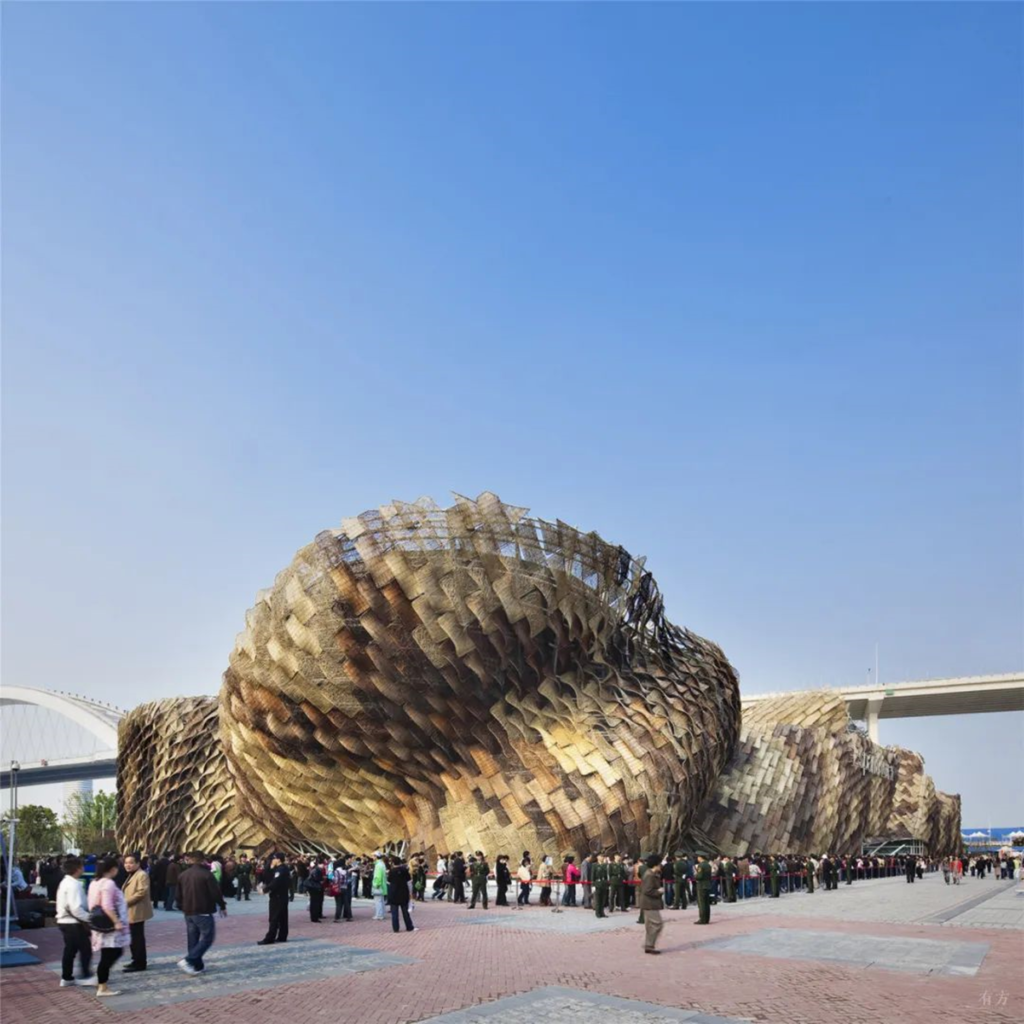LOCATION:Shanghai,
DATE:2010
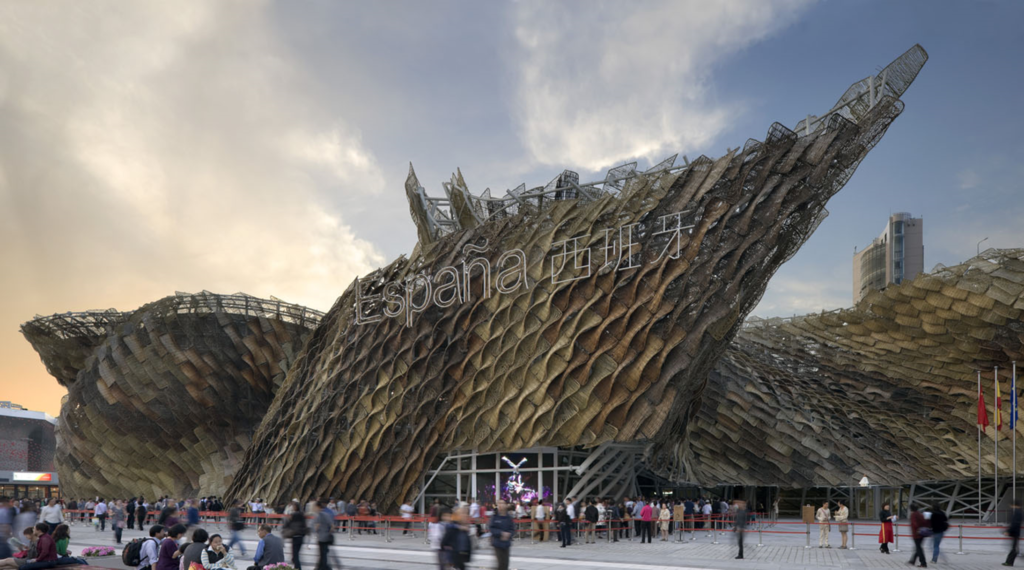
The Spanish Pavilion for the 2010 World Expo of Shanghai sought to reflect upon the Spanish climate, as well as to recover the extraordinary craft of wickerwork in order to bring it back to life and to reinvent it as a new construction technique.
This building sought to play with the incredible potential of wickerwork. Furthermore, it sought to introduce wicker as a sustainable and viable material concept that would remain present throughout the building.
Basketry techniques, handcrafts with natural fibers, are a global tradition shared by cultures of all ages. Even though they vary from region to region, they occur in similar ways East and West. In this sense, the material choice for the pavilion attempted to bridge between two cultures, the Spanish (visiting) and the Chinese (the host).
The Spanish Pavilion has a usable area of 7,500m2. Aside from the spaces destined to hold the main exhibits, the pavilion is fitted out to host official receptions with an auditorium, a conference room, a press room, and support area.
Generative logic
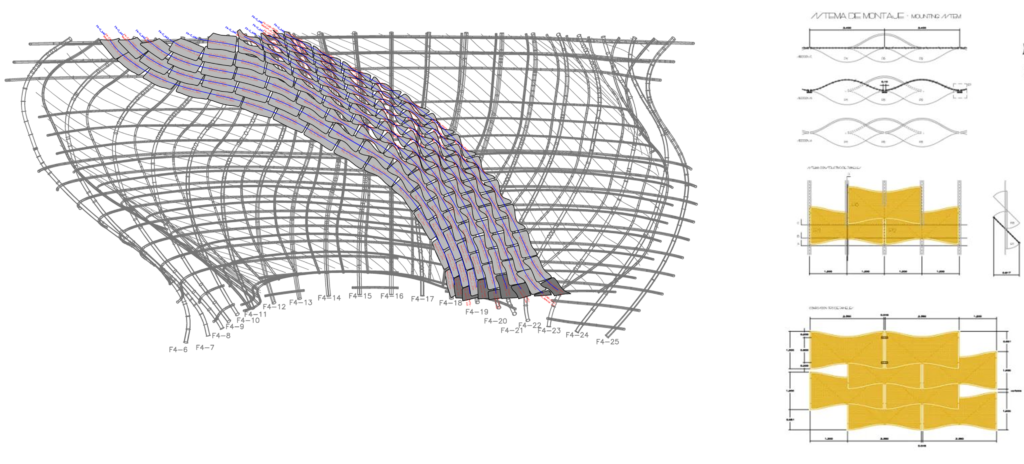
The logic behind the form’s generation involves countless interwoven panels arranged around the twisted structure at specific angles, ultimately attaching onto the underlying framework.
Process & Pseudocode
1.Unrolled Surface Creation
To ensure each panel is uniformly arranged on the twisted form, an unrolled surface is established based on the original twisted surface.
The tween curve lines are established according to the angle of the panel.

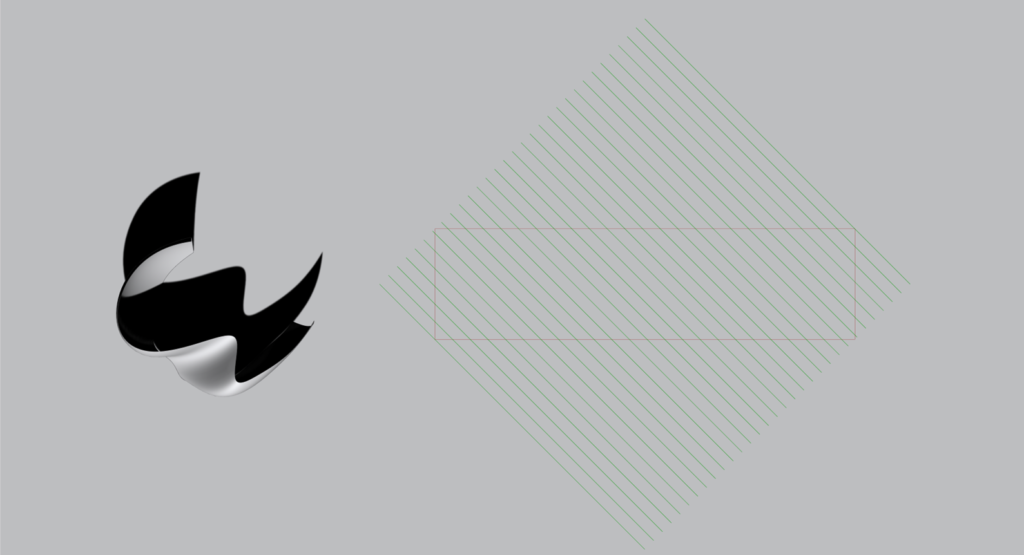
2. Panel Creation
Arrange and place the panels in alternating odd-even sequence, then filter out the panels within the unrolled surface range.

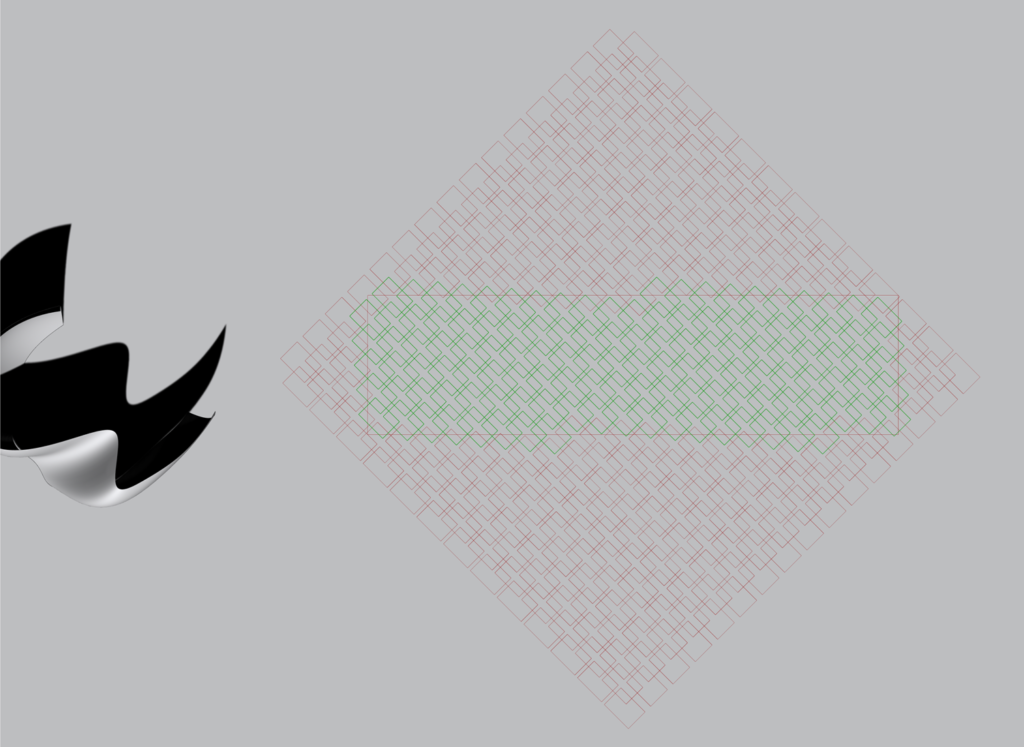
3. Form Creation
Adjusting the undulation of each panel’s edge control lines to achieve the effect of interlocking panels. Finally, reflow back to the original twisted surface.

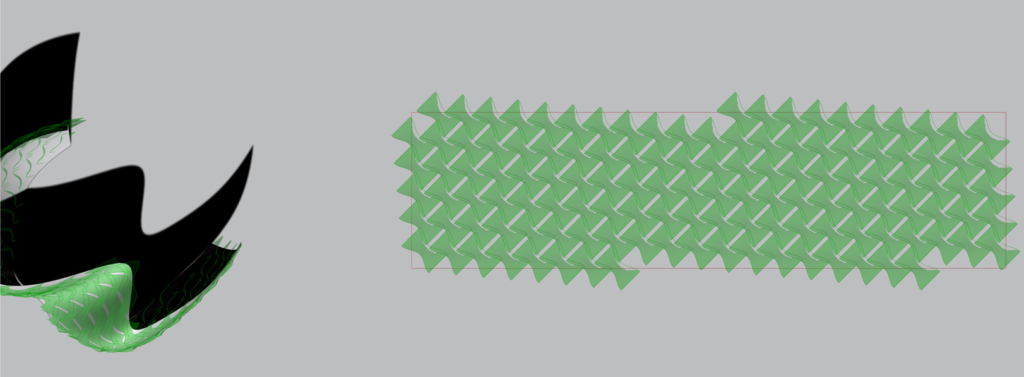
4.Structure Creation
By extracting the UV curve of the surface, generate the underlying support framework

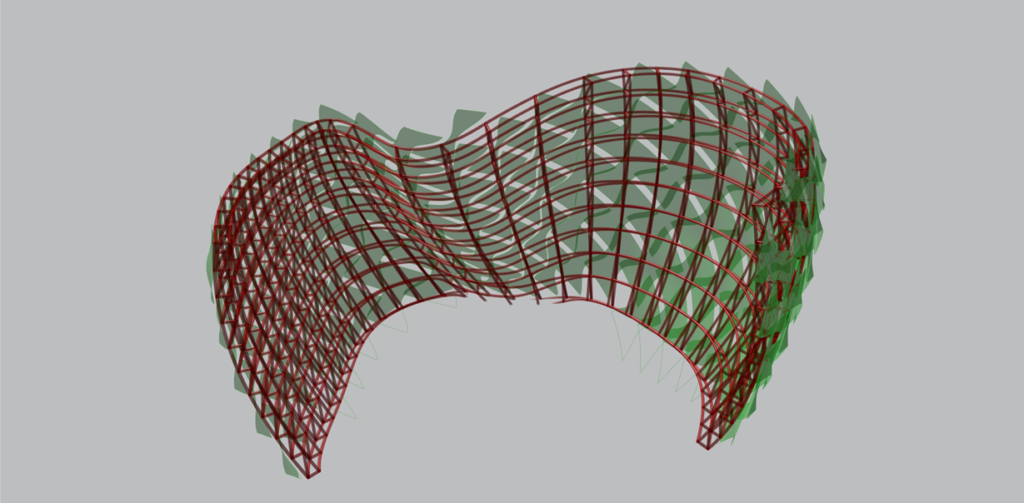
5.Animation Creation


6. Woven Panels Creation
In three different logics, establish three types of woven panels
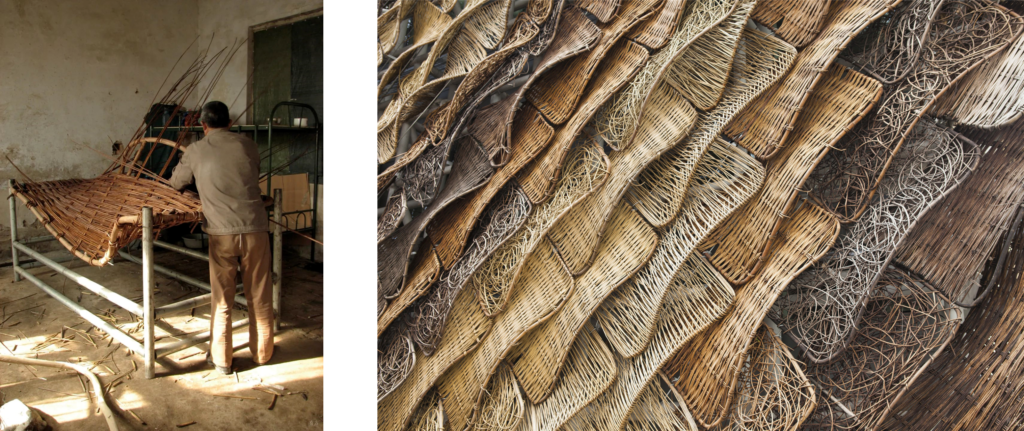
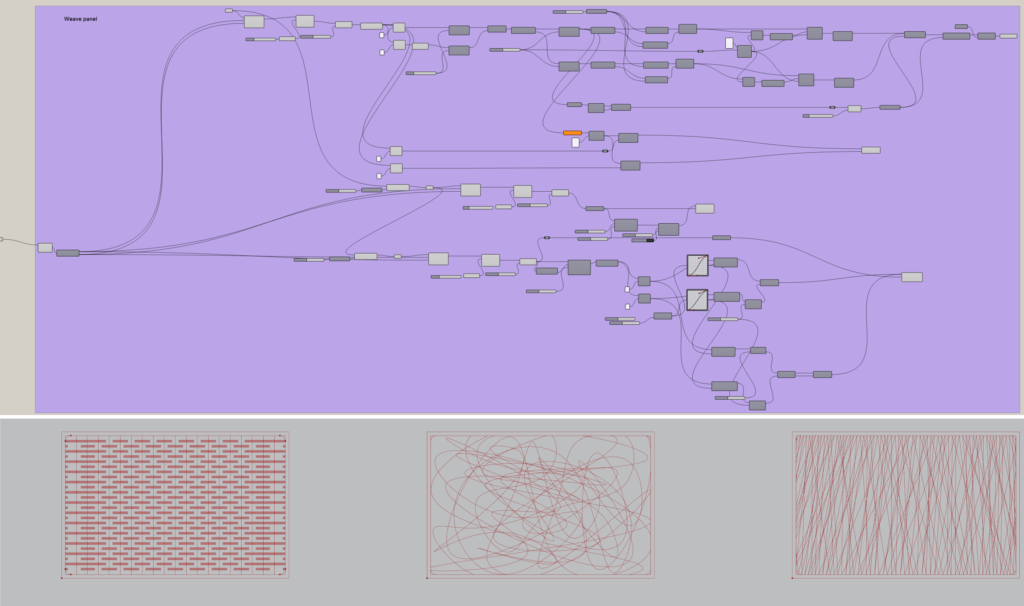
Next Step
The pavilion is composed of various woven patterns forming Chinese characters.
The next step will involve further consideration on how to create the desired Chinese characters using these patterns.
Perhaps utilizing curve interference to select different patterns could be a way forward····
